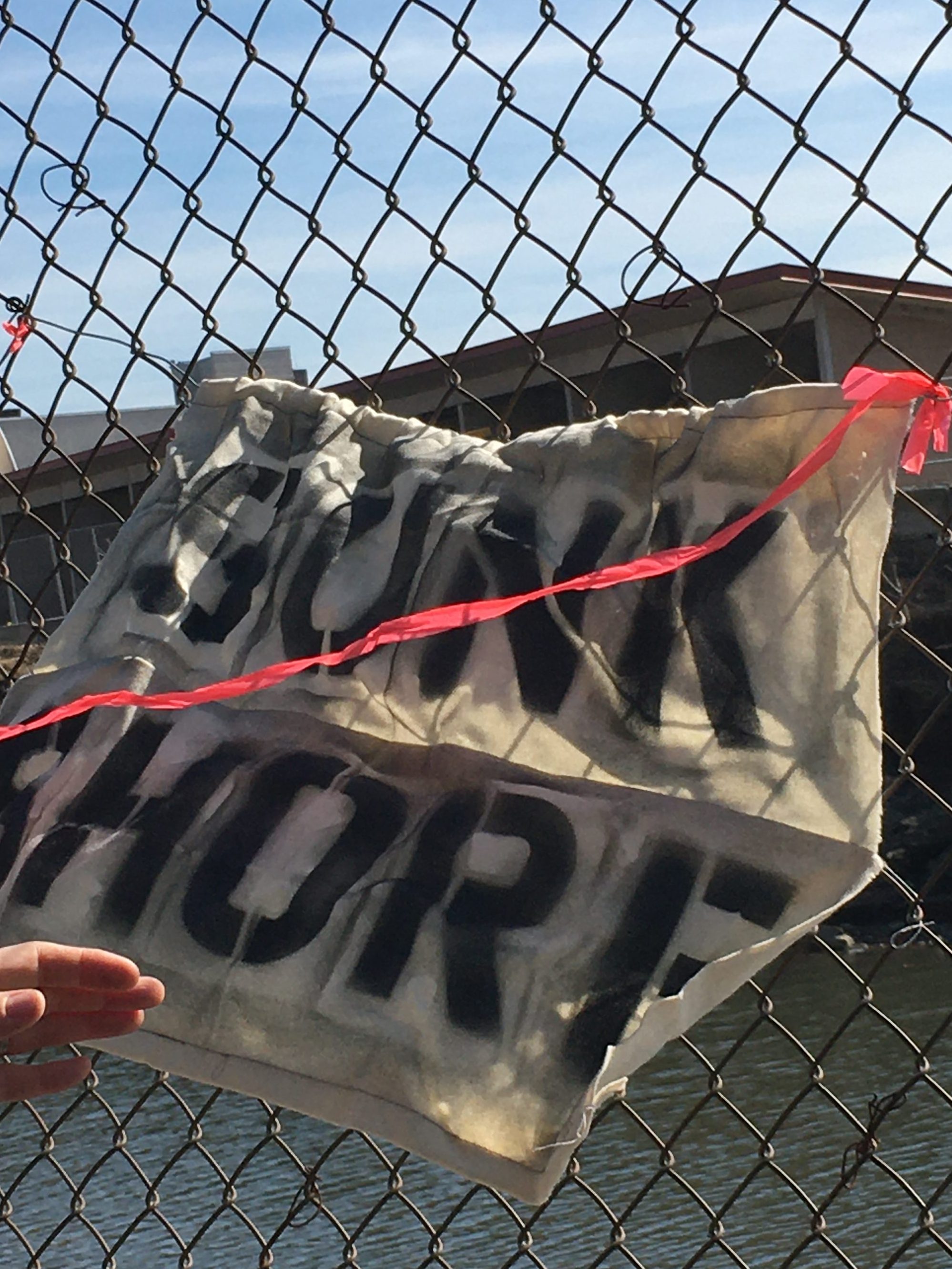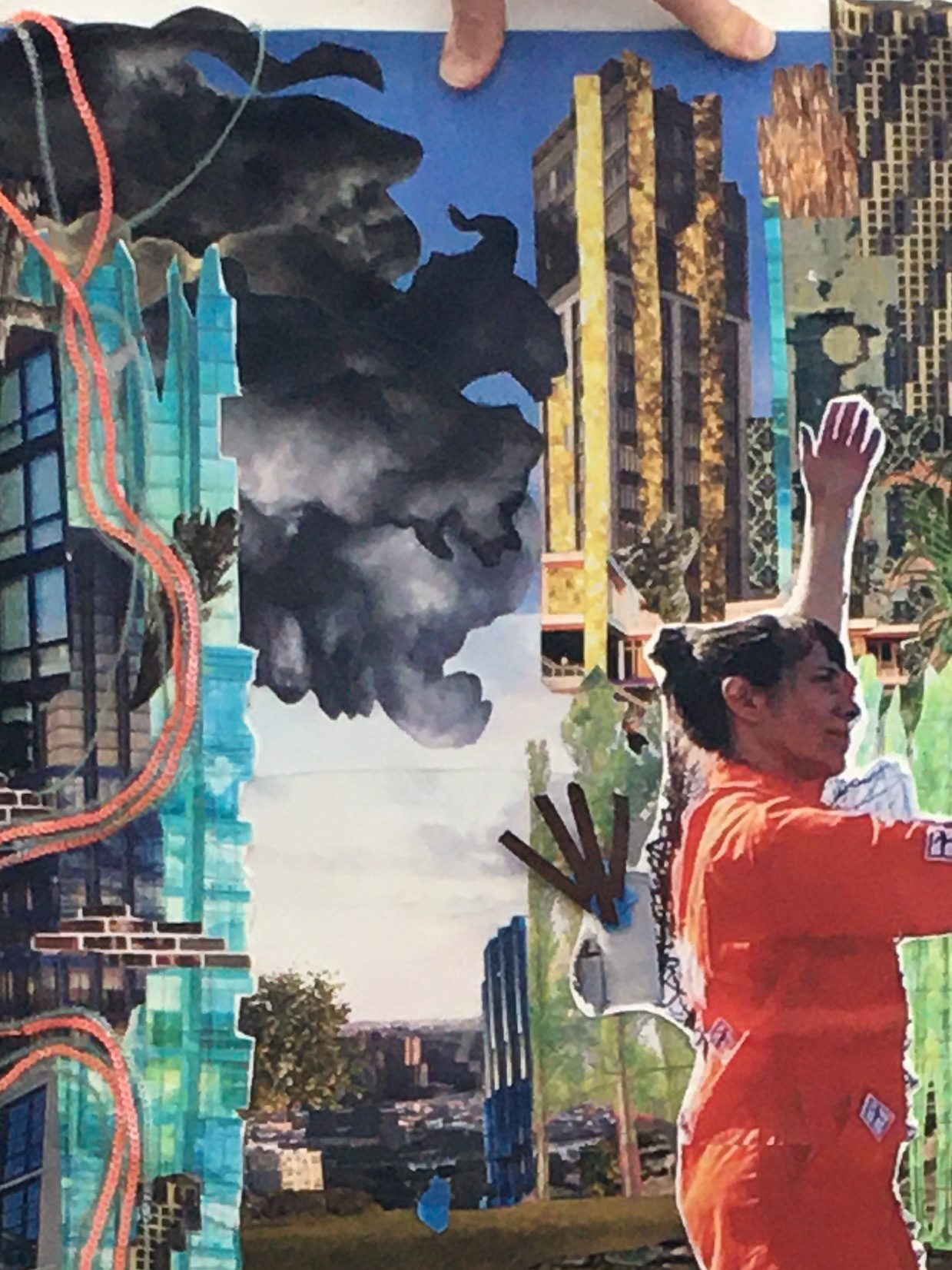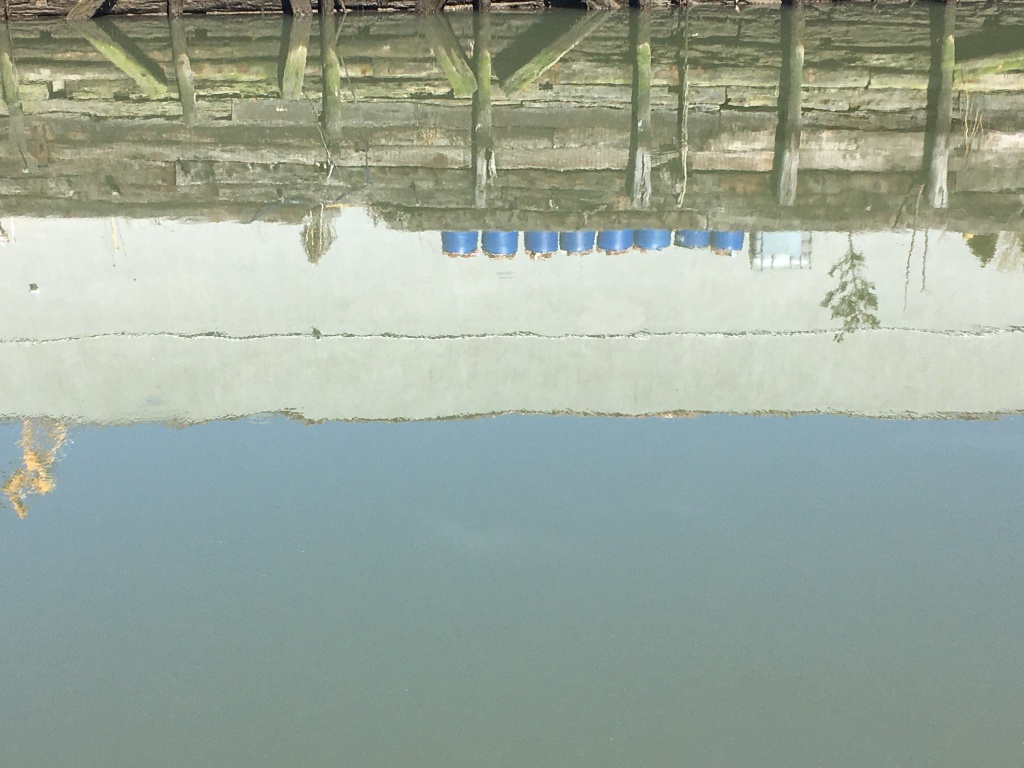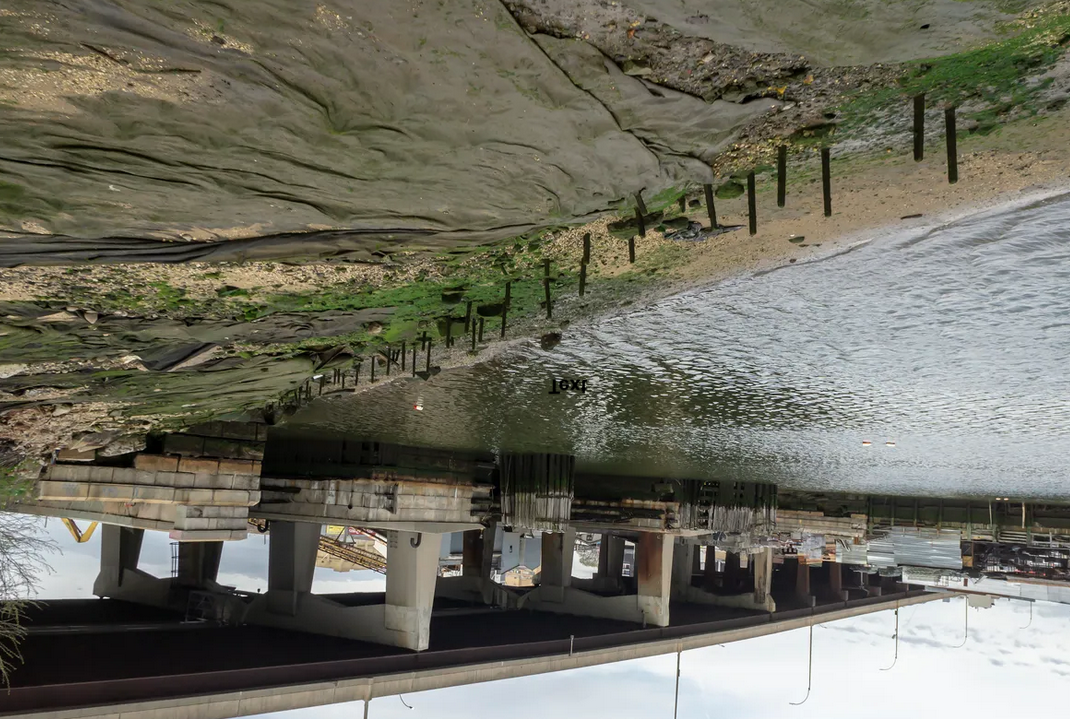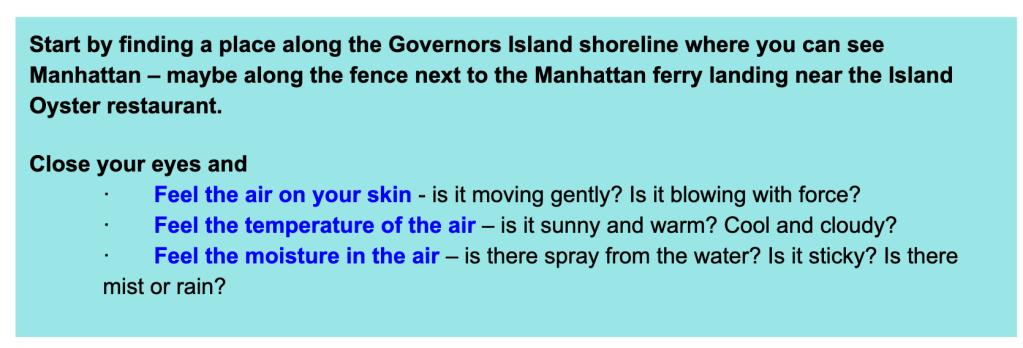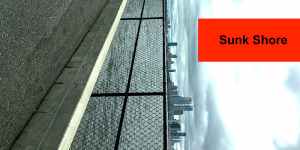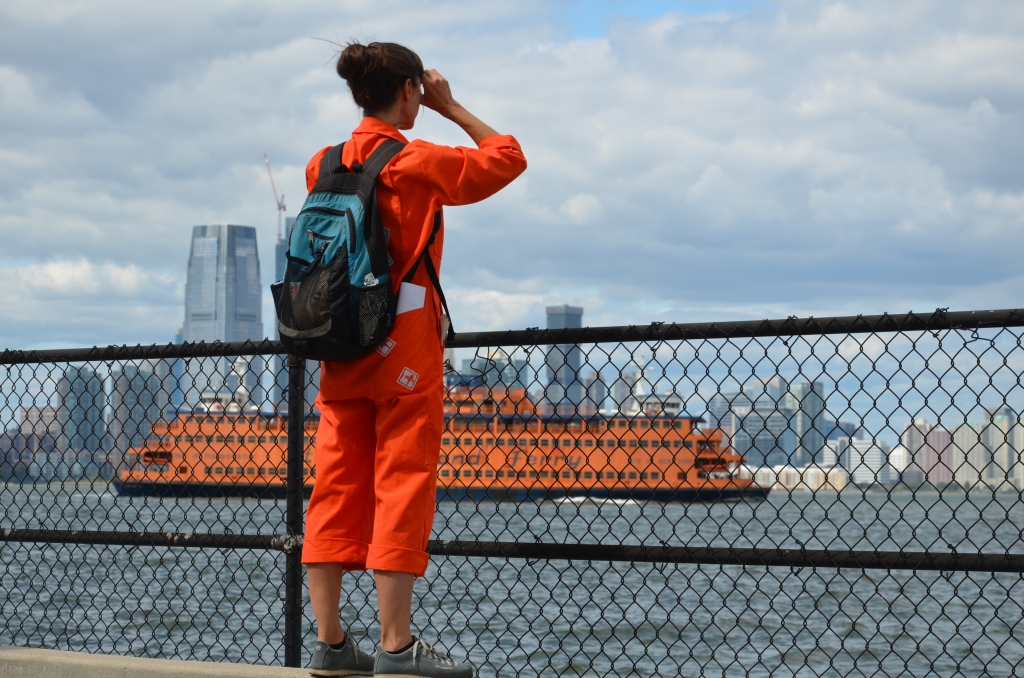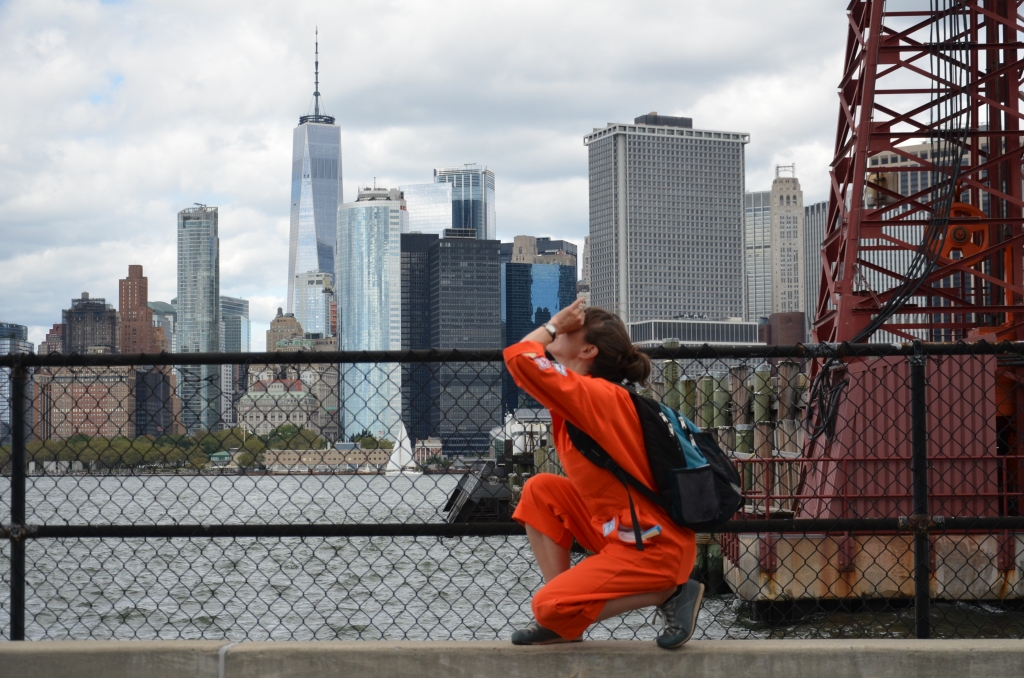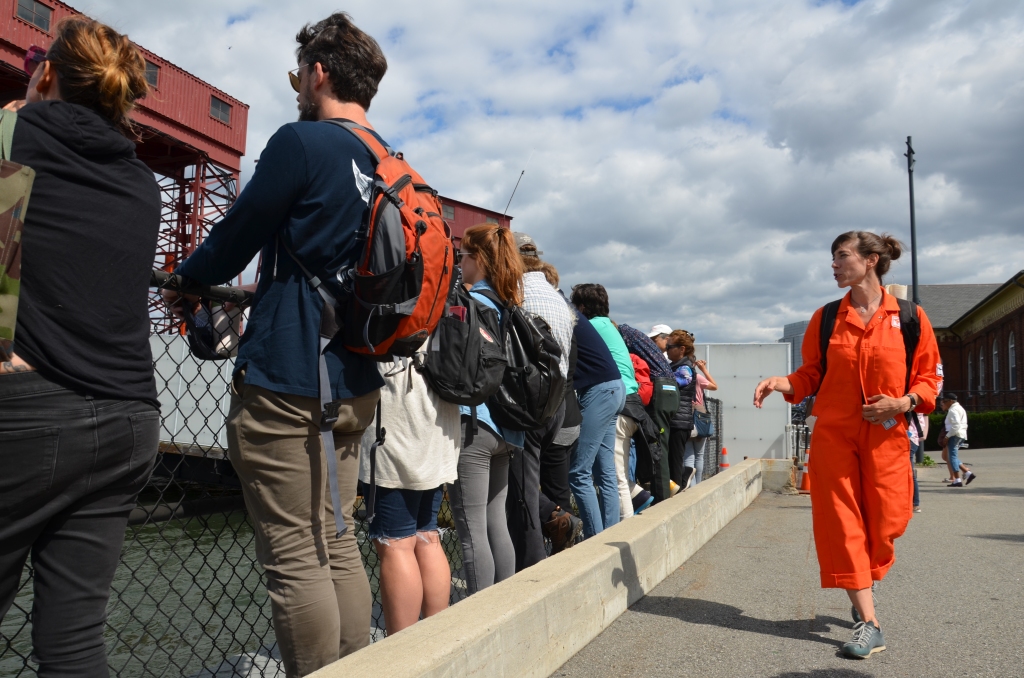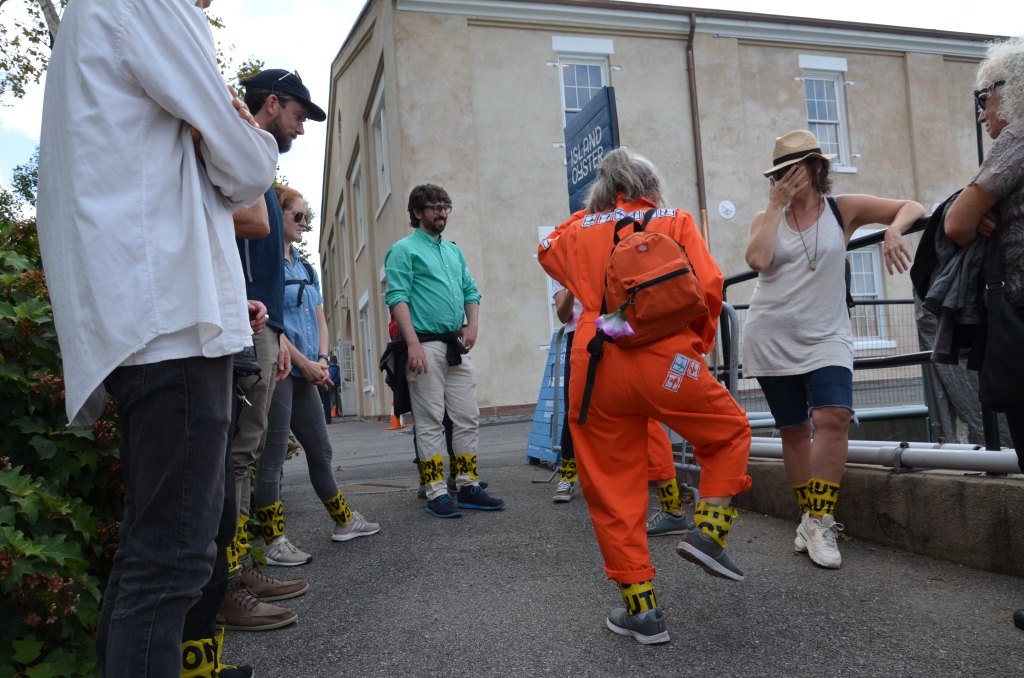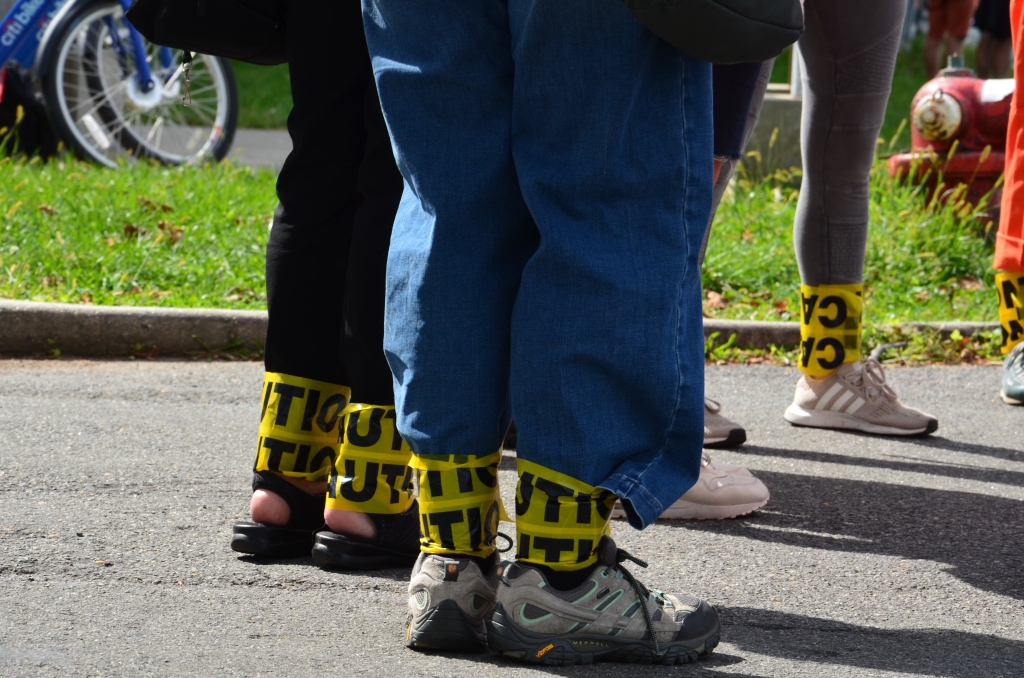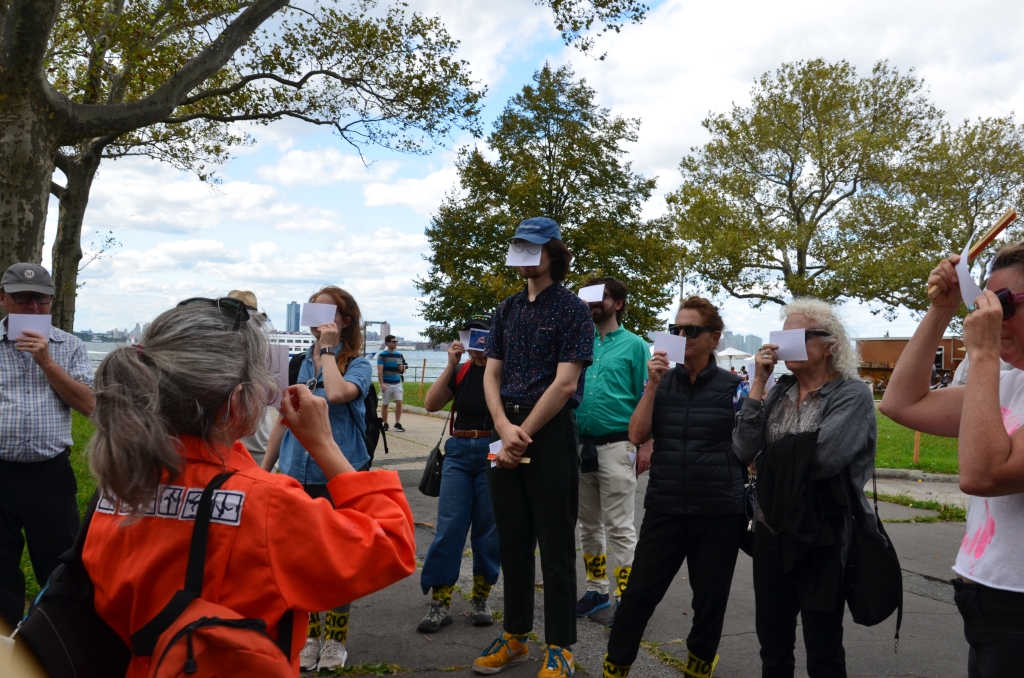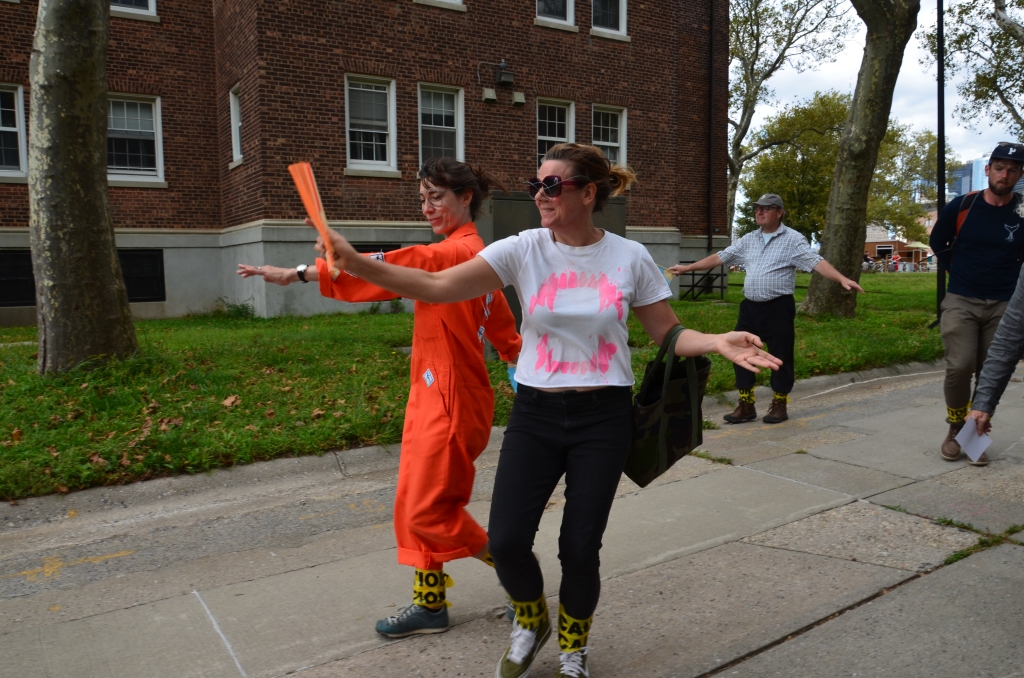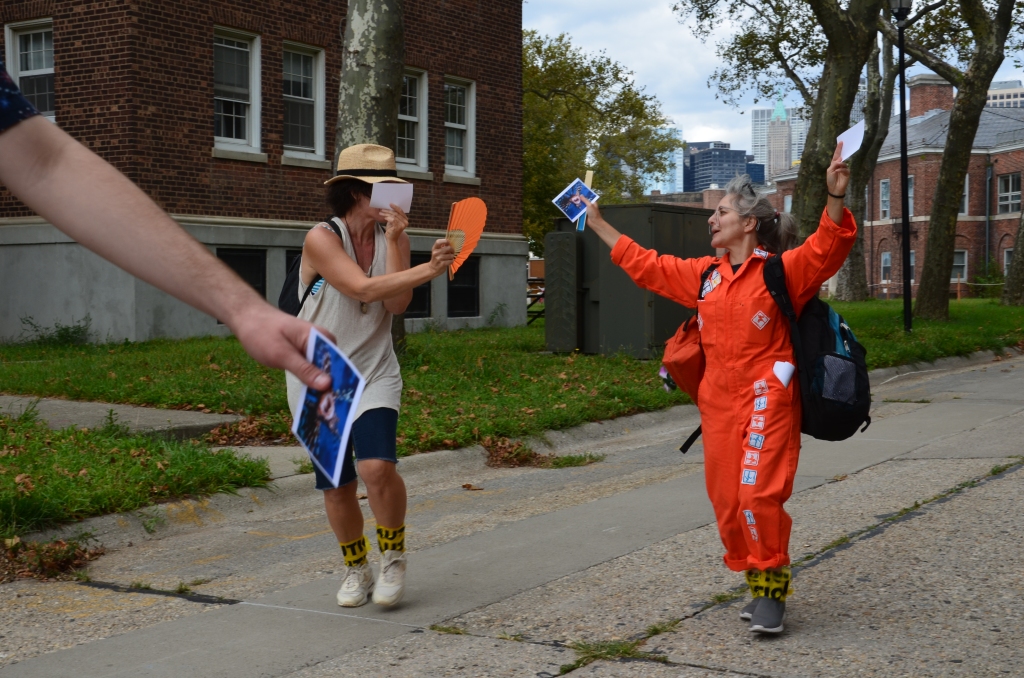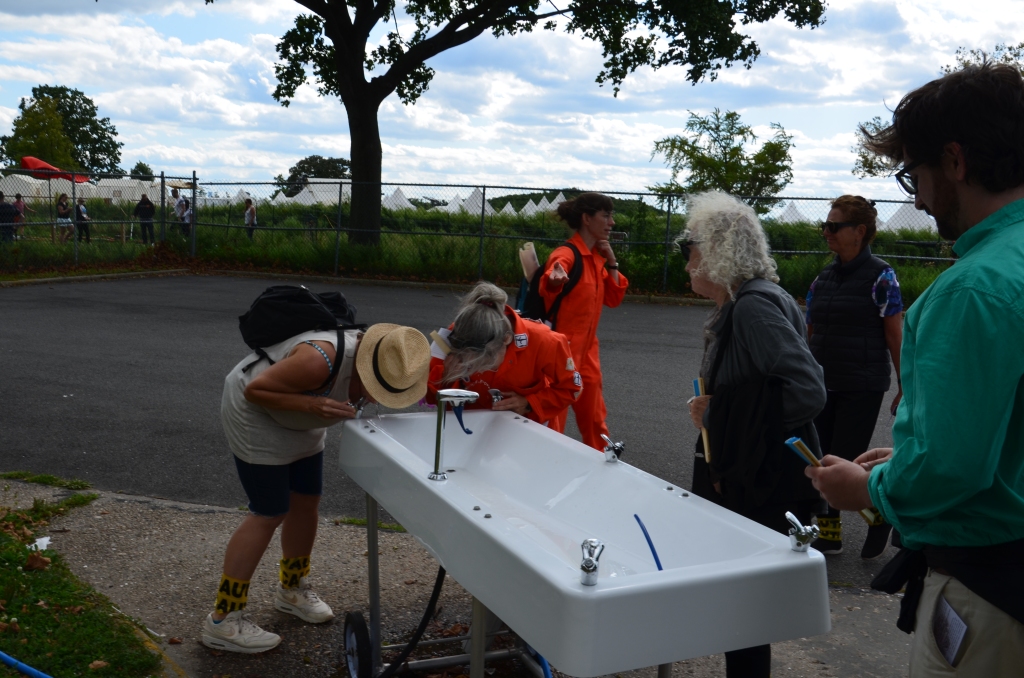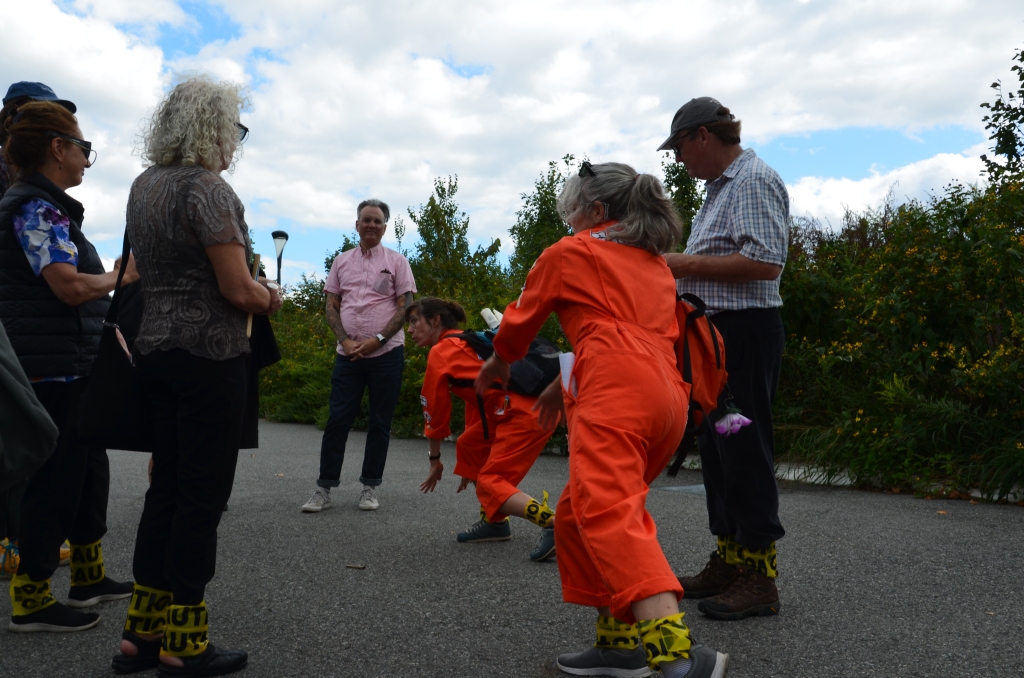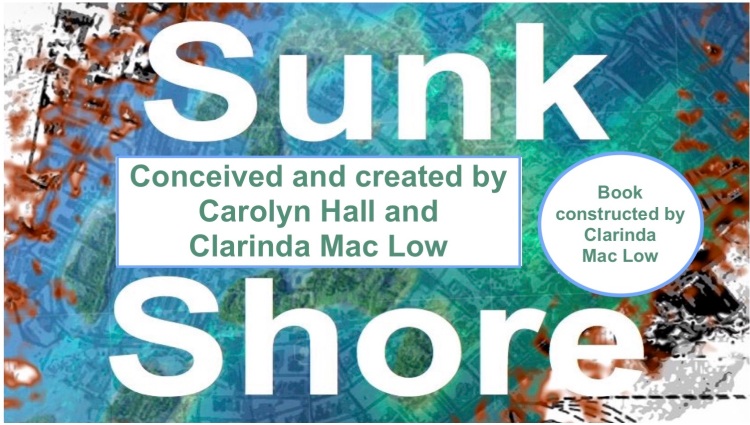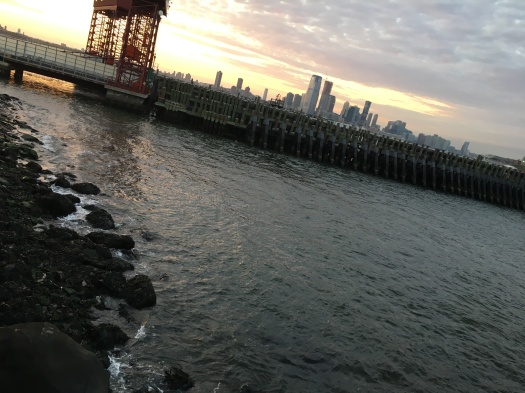
Sunk Shore, created by Carolyn Hall and Clarinda Mac Low, is a speculative, experiential tour of our climate crisis future that takes place along specific shorelines. The tours time travel into an extrapolated future based on a deep dive into climate change data. Sunk Shore creates an embodied experience of information, giving the facts weight and impact. The events of the tour are based on research about events expected to take place (and already happening), including rising sea levels, changing animal species, higher heat, ingenious solutions, possible social revolutions, and more, using a combination of props (or “experiential what-nots”), narrative, and participatory activities. The tours are supplemented by digital video collages that bring the extrapolations to life and large-scale collage works that immerse the viewer in a future moment, Sunk Shore has also expanded into an educational template, leading workshops, presenting at conferences, and giving lectures for a variety of organizations.
Contact Sunk Shore at sunkshore [at] gmail [dot] com for more information.
Sunk Shore 2022
Sunk Shore: Gowanus
This Spring, Sunk Shore, in collaboration with Open Source Gallery and The Old Stone House and Arts Gowanus will be touring the future of the Gowanus Canal and Bay, including creating a tour in collaboration with neighborhood residents. If you’re a Gowanus resident, and you’re interested in constructing a journey with Sunk Shore, please attend this workshop and/or fill out this form
Gowanus Canyon 2100 | April 10 – June 26 | Opening April 10, 4-6 PM
On view in the 2nd floor Great Room at the Old Stone House, 336 3rd St., Park Slope | Gallery Hours: Friday-Sunday, 12-3pm or by appointment.
The first stop on the Gowanus tour: In Brooklyn Utopias: Along The Canal, a collaboration between The Old Stone House and Arts Gowanus. In Gowanus Canyon 2100, Sunk Shore reports back from beginning of the next century. This snapshot of the fantastically different climate changed 2100 is accompanied by a video future history that leads you from now until then and a gift to take away.
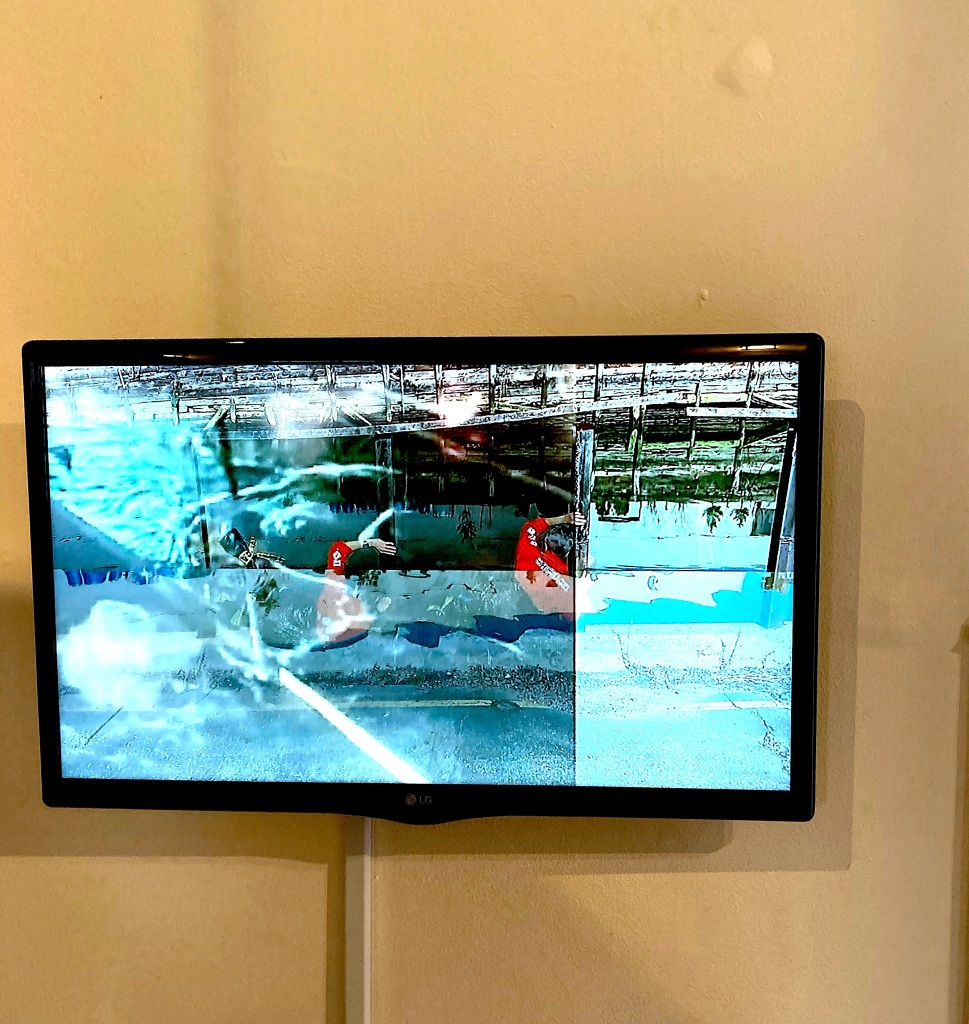
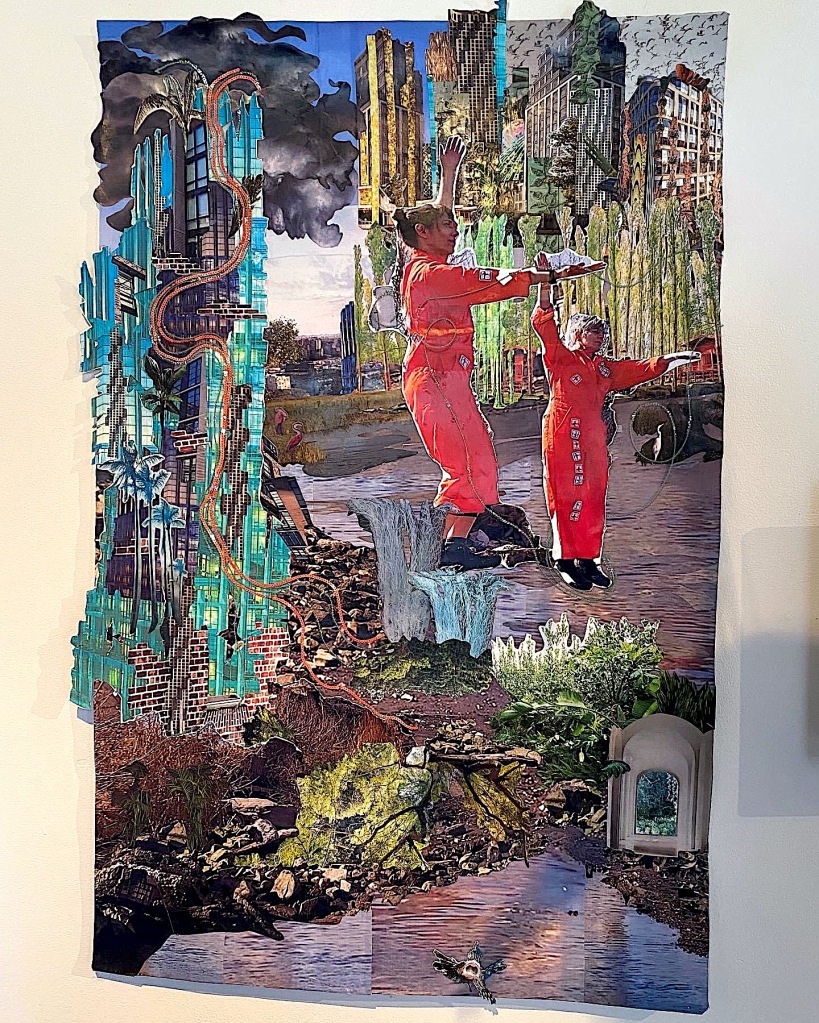
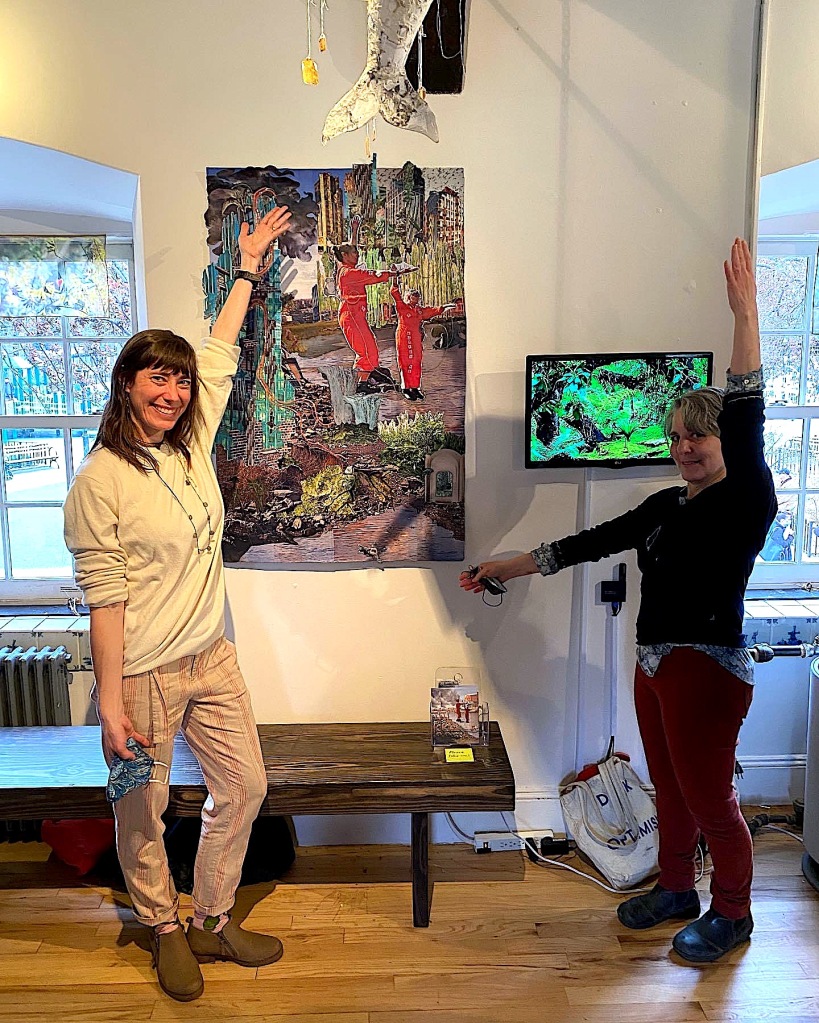

Also showing work: Lisa Aurigemma, Sasha Chavchavadze, Dov Diamond, Chasity Fryer and Mary Glover, Nathan Kensinger, Leslie Kerby, Radha Korman, Karen Mainenti, Christina Massey, Robin Michals, Caitlin Miller, Carolyn Monastra, Lynn Newman/Artichoke Dance, Iviva Olenick, Red Hook Art Project, Amy Ritter, Manju Shandler, Daniel Anthony Vasquez, Liam Wiesenberger and Ella Yang
Sunk Shore | Open Source Gallery | April 23 – June 5 | Opening April 23, 4-7 PM
Open Source Gallery | 306 17th St. Brooklyn NY 111215 | Open Sat. & Sun. 12-6, or by appointment
Two-session Workshop: April 30 and May 1, 11am – 2pm (more information and sign up here)
Sunk Shore Archive–A gallery show of tours, ephemera, and actions from 2017-2022, including work by Gowanus residents from a Two-session Workshop on April 30 and May 1, 11am – 2pm (more information and sign up here) and from a workshop for Teen Leaders through Genspace. There will also be a live! Sunk Shore tour, devised and led by Gowanus residents, in the first week of June.
Sunk Shore: Gowanus is part of the Works on Water Triennial, taking place from April-October 2022. Check out the WoW website and Instagram for more events and information.
Sunk Shore 2021
As part of Tending the Edge (a continuation of Walking the Edge, see below), where artists from across the five boroughs, spent two months offering points of engagement and weaving relationships across New York City’s shoreline, through districts, wetlands, rivers, and boroughs, all the way to city hall, Sunk Shore visited Cody Ann Herrmann’s Brownfield Boating tours in Flushing Bay and Creek, and took visitors on a tour of the future of the two shores there.
Sunk Shore 2020
As part of Walking the Edge, a collaboration between arts organizations Works on Water and Culture Push, and the NYC Department of City Planning, Sunk Shore took over the Works on Water Instagram account, and delivered a report back from the future shorelines of the East River. The tour started in a very stormy 2092, and traveled backward in time to 2068, 2043, and 2020.
Walking the Edge
We also shared a workbook with visitors to Governors Island that led them on a self-guided tour of the past.
Sunk Shore 2019
Sept. 7-8 & Sept. 21, 2019
In 2019 Sunk Shore returned to Governors Island. Carolyn Hall and Clarinda Mac Low led participants along a route close to and on the north shore of Governors Island, .
The tour was approximately one hour and traveled approximately one mile, from Soisson’s Landing on the shore, passing through Liggett’s Terrace and ending at Fort Jay.
Sunk Shore 2018
As part of the Works on Water/Underwater New York Residency at the WoWHaus (House 5B on Nolan Park, Governors Island), Carolyn Hall and Clarinda Mac Low led a tour along a route close to and on the south shore of Governors Island, time traveling into a speculative fiction based on a deep dive into climate change data. Tours took place Sept. 8 & 23, 2018.
Sunk Shore is built as an embodied experience of information about the climate crisis. Data can seem very remote or abstract, so Sunk Shore aims to give the facts weight and impact.
Devised by Carolyn Hall and Clarinda Mac Low, with contributions from Paul Benney.
Link here for Credits and Research for Sunk Shore
Documentation of tour and research process
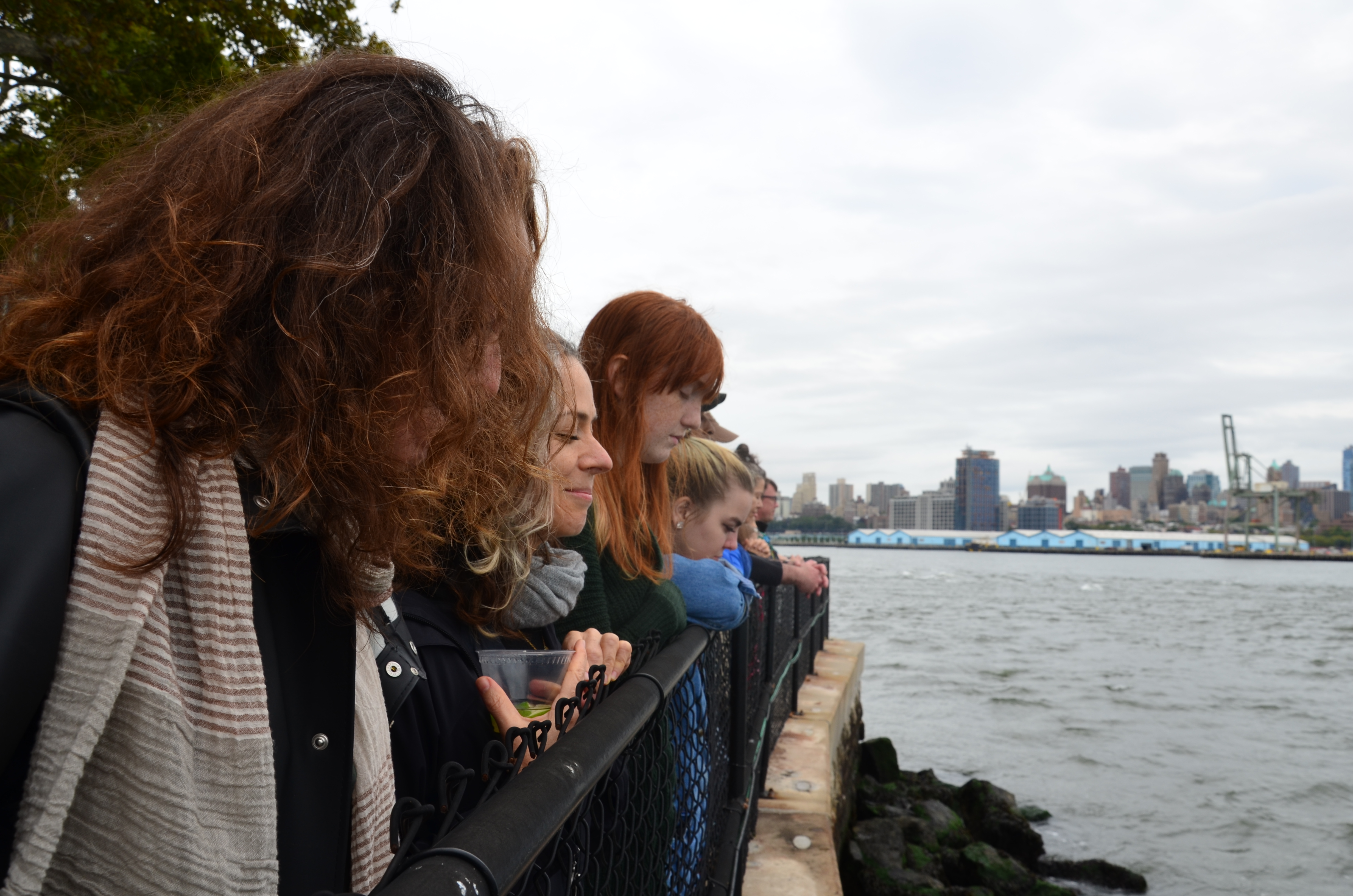
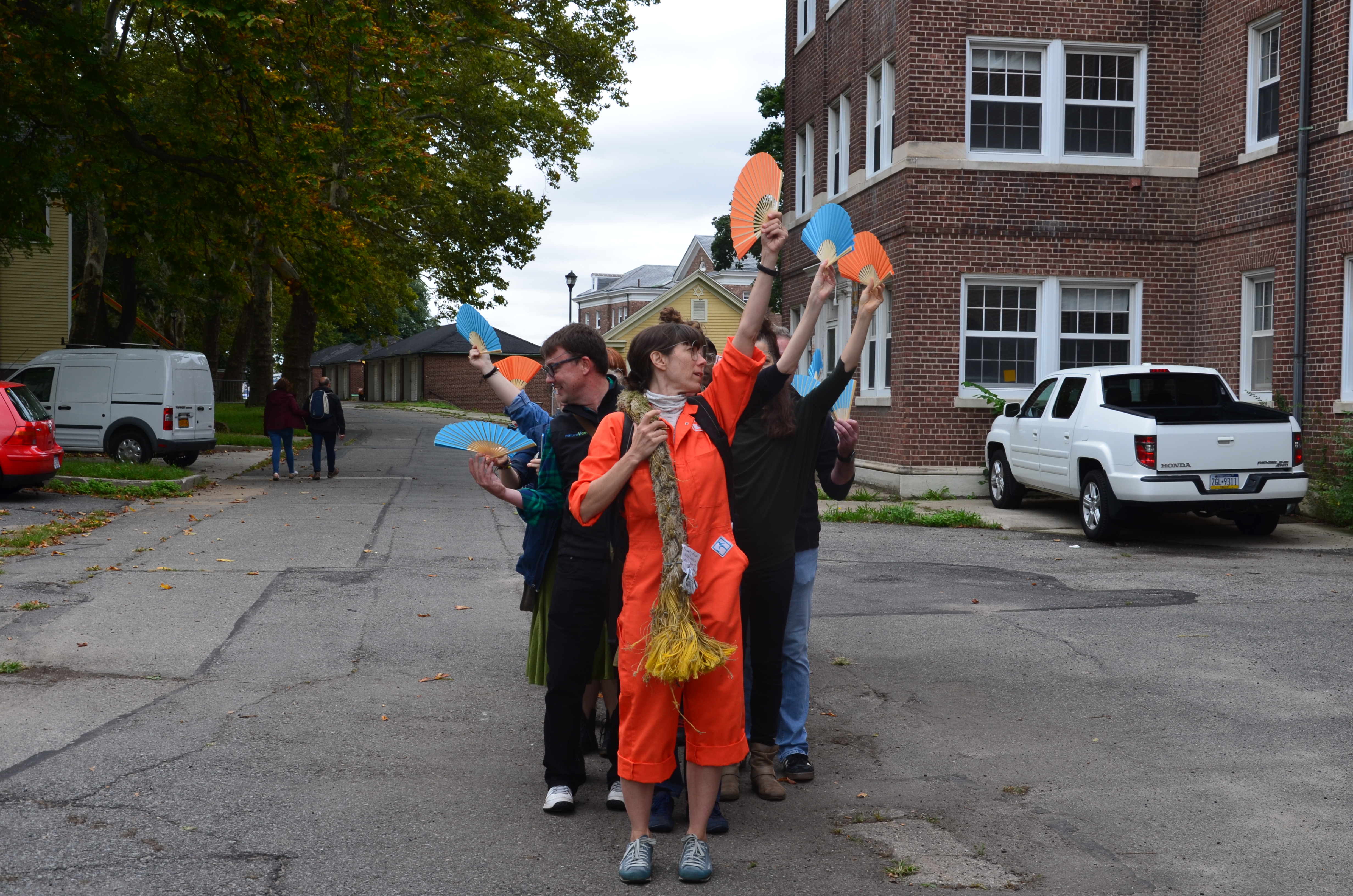
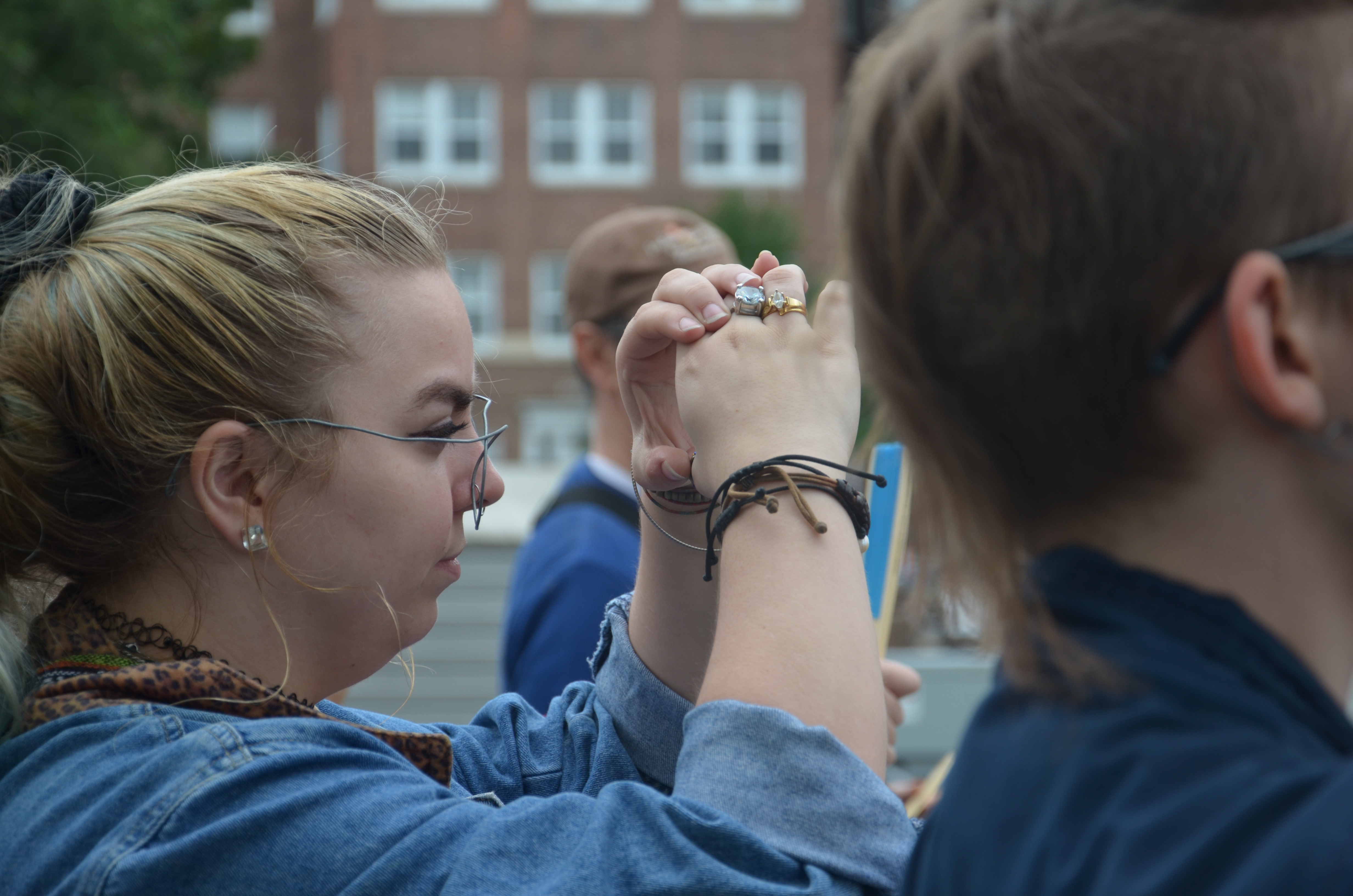
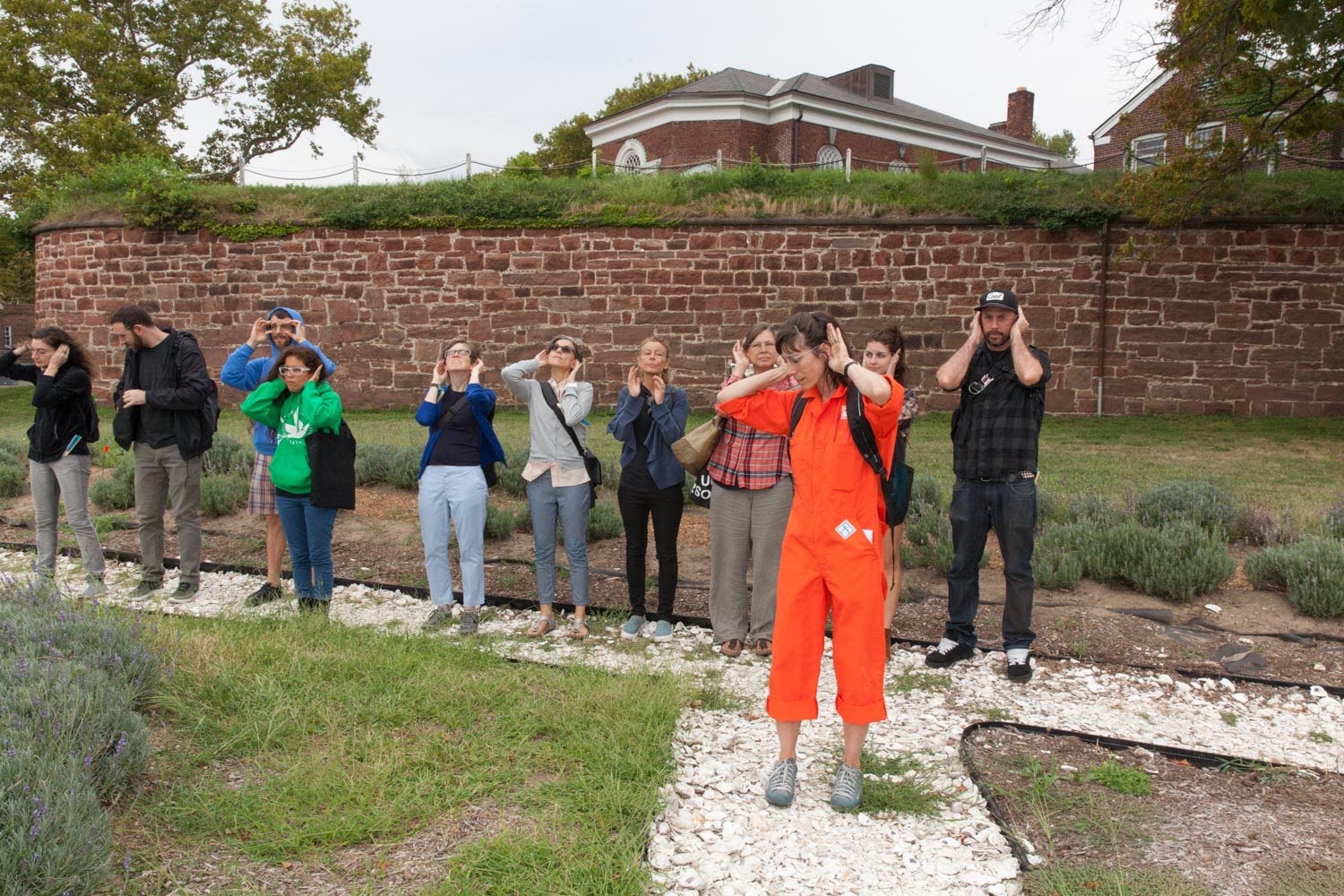

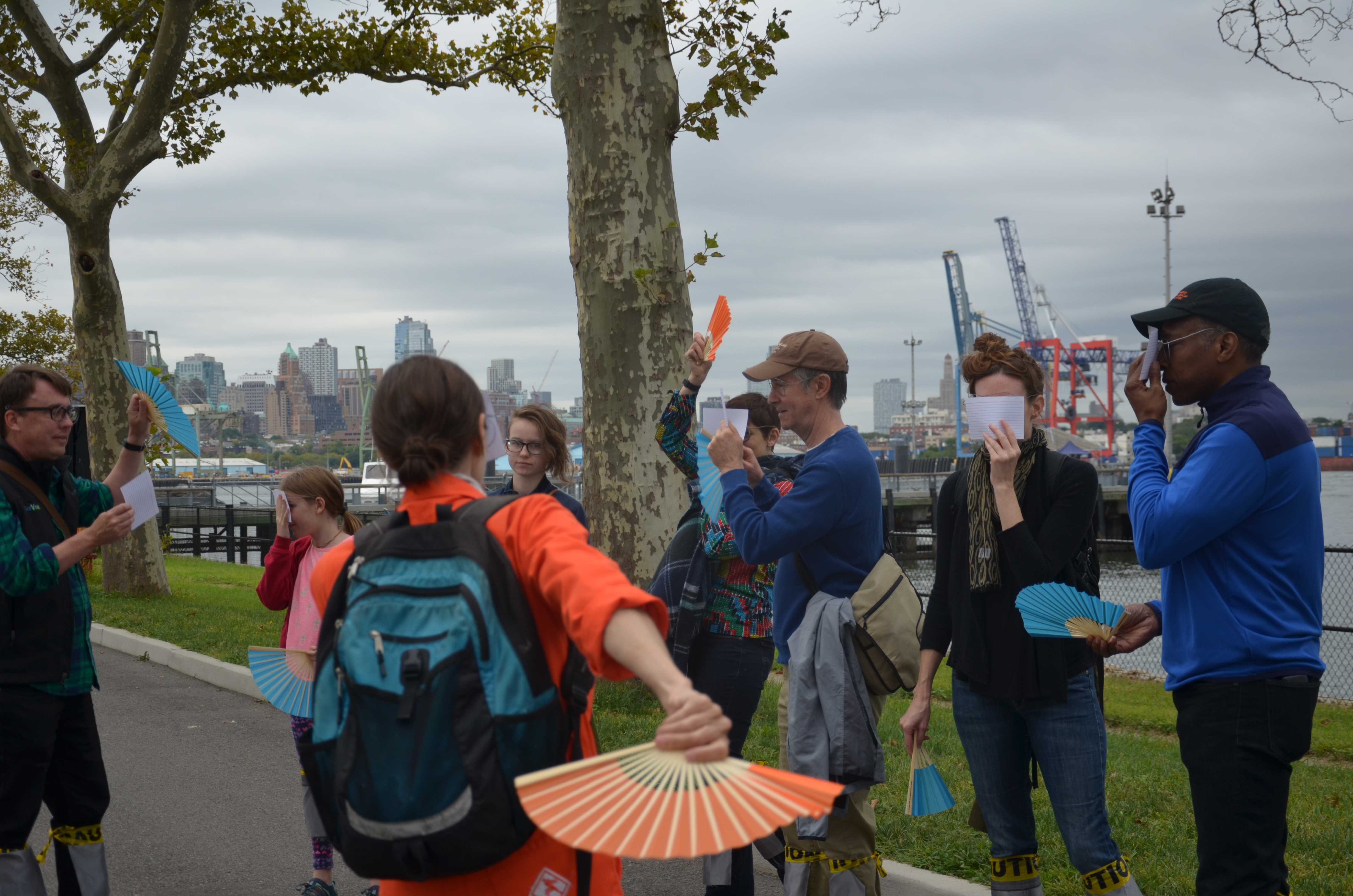
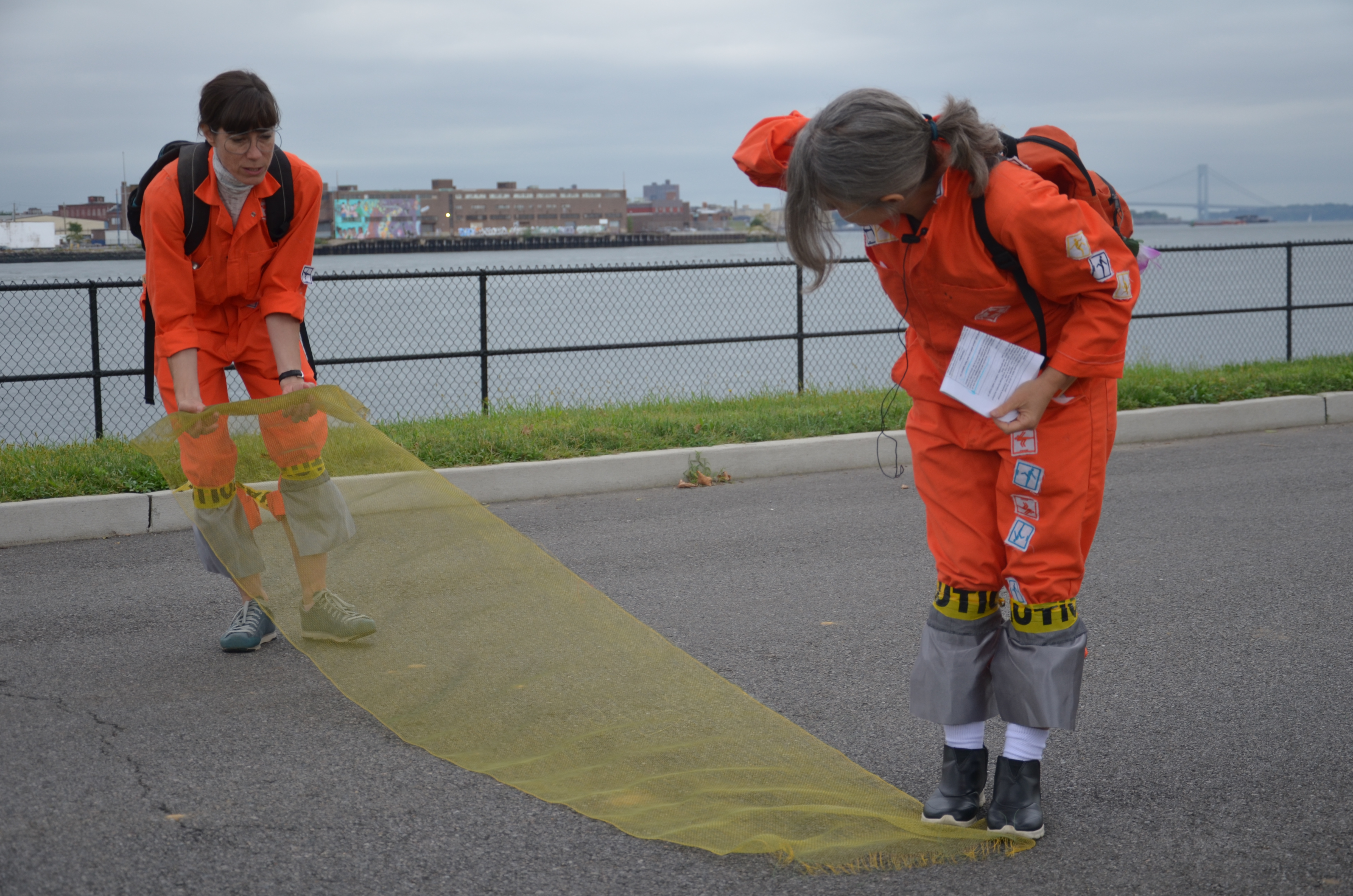
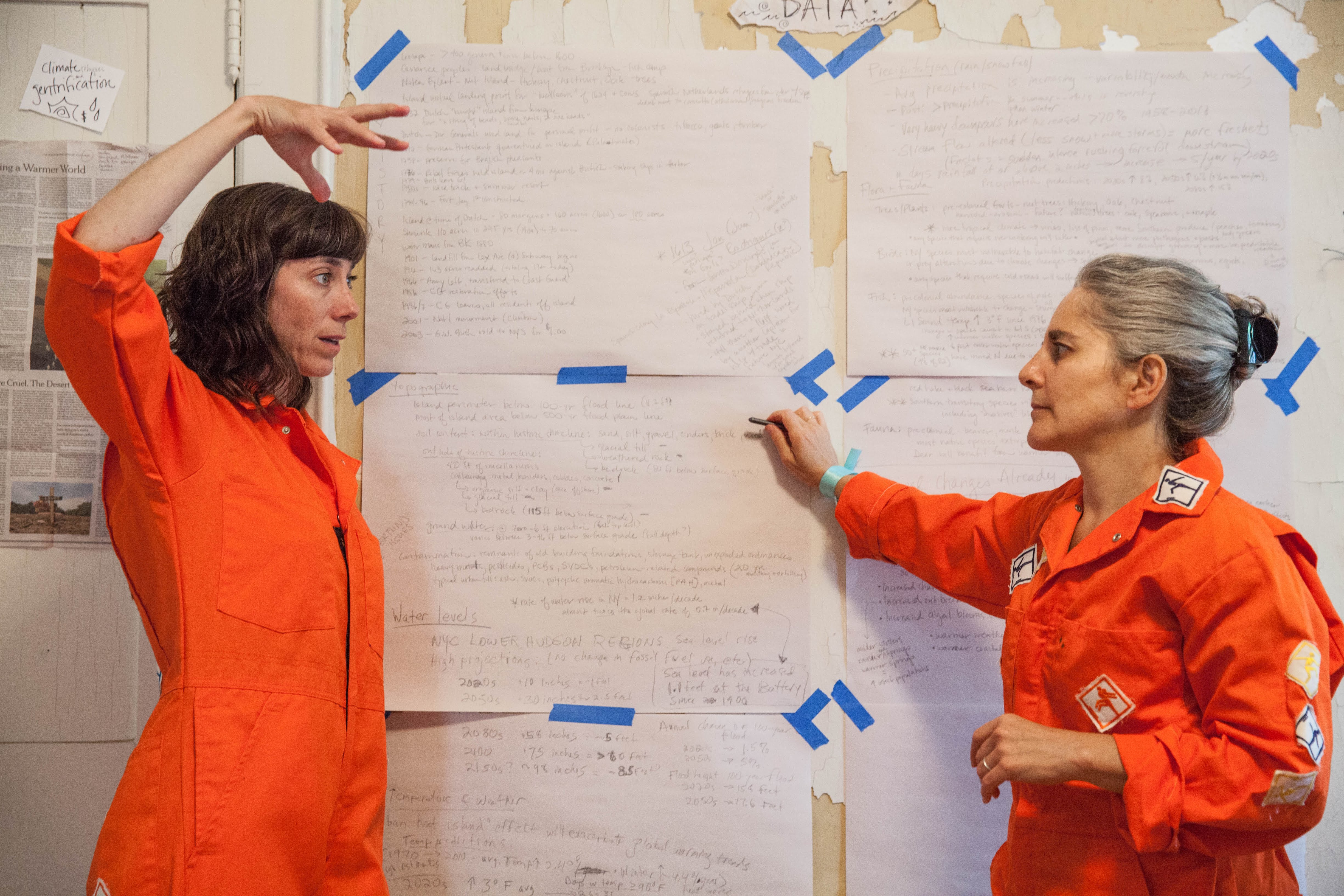
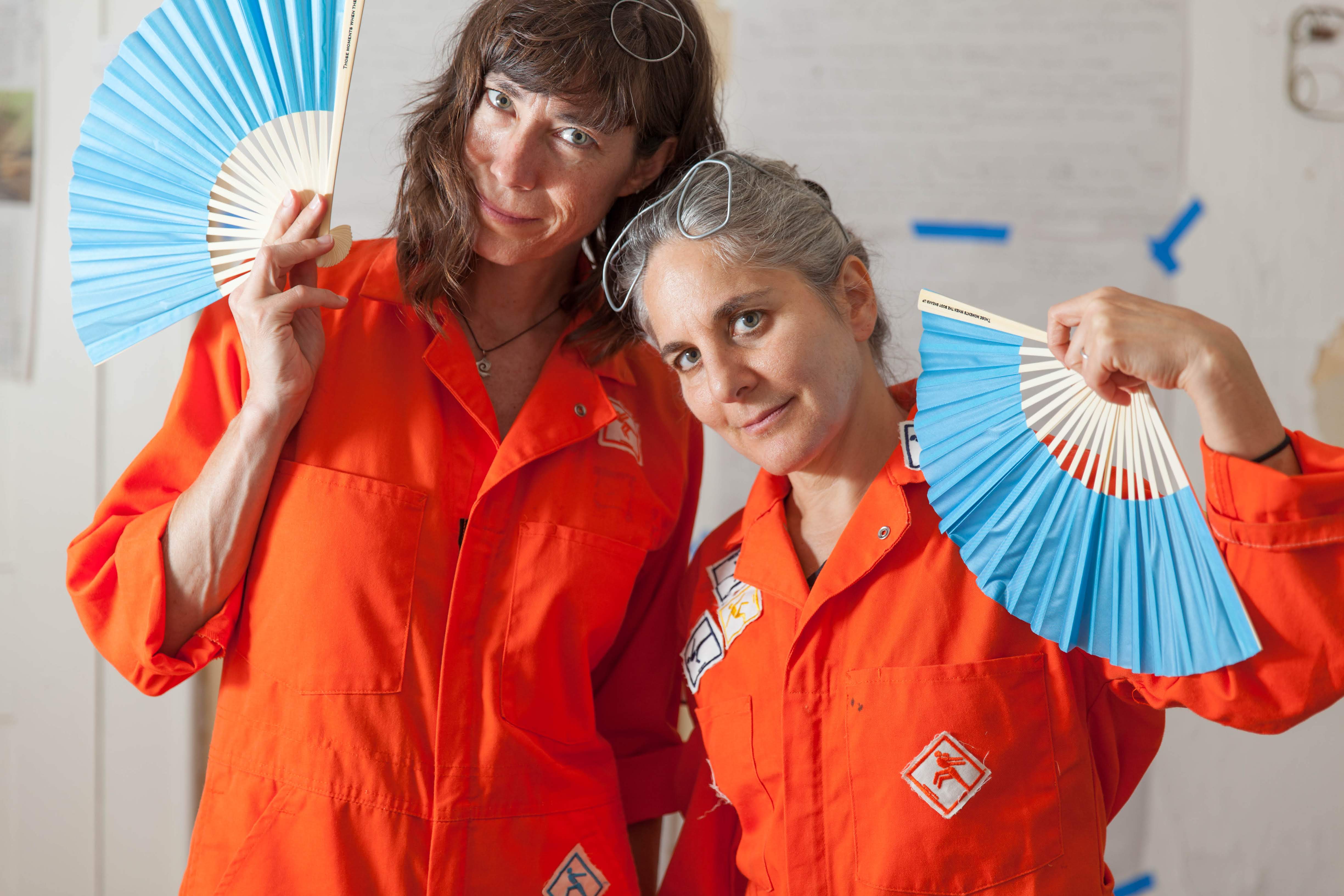
Documentation of an installation of ephemera, artifacts, and research at the WoWHaus on Governors Island.
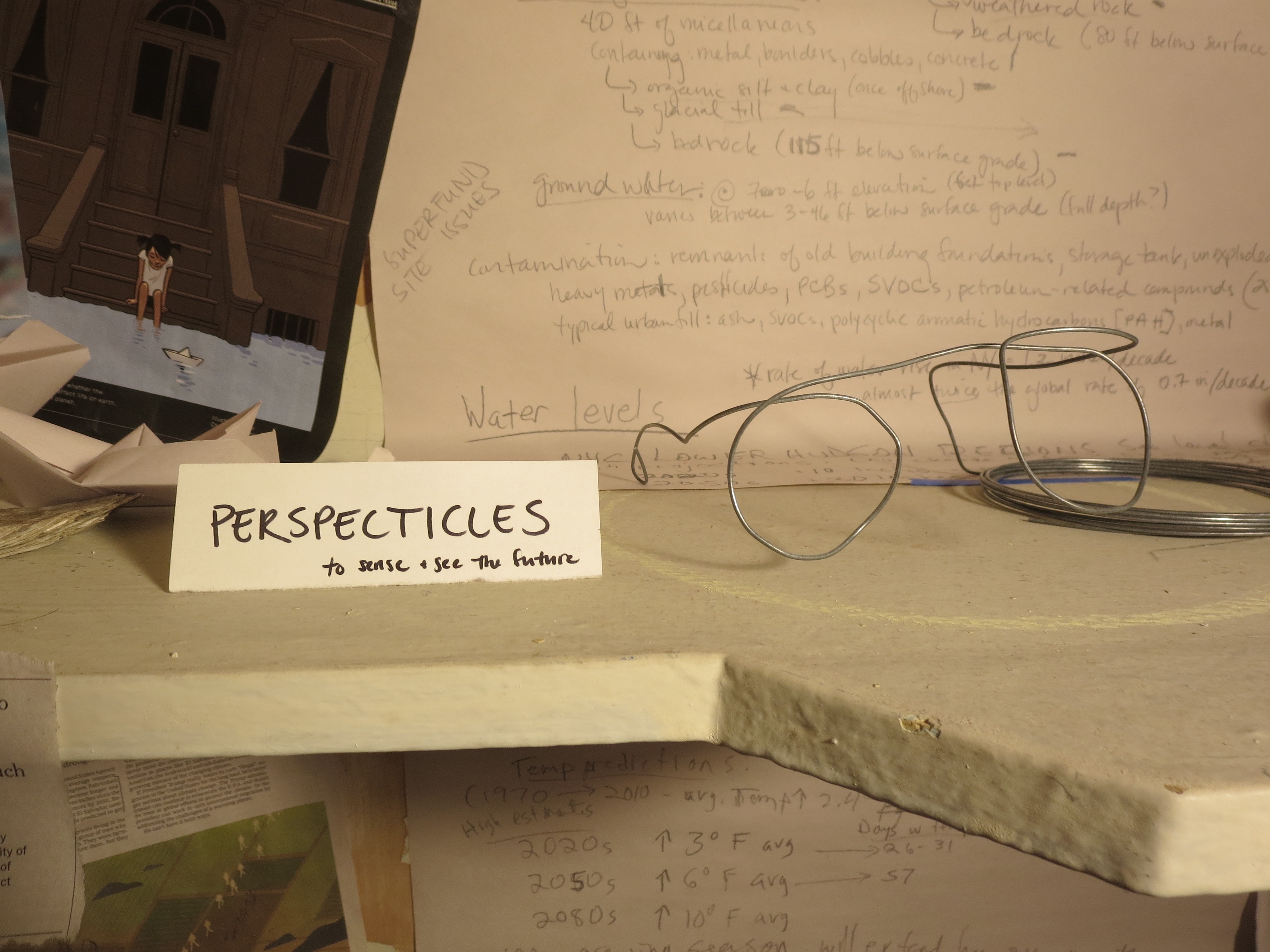
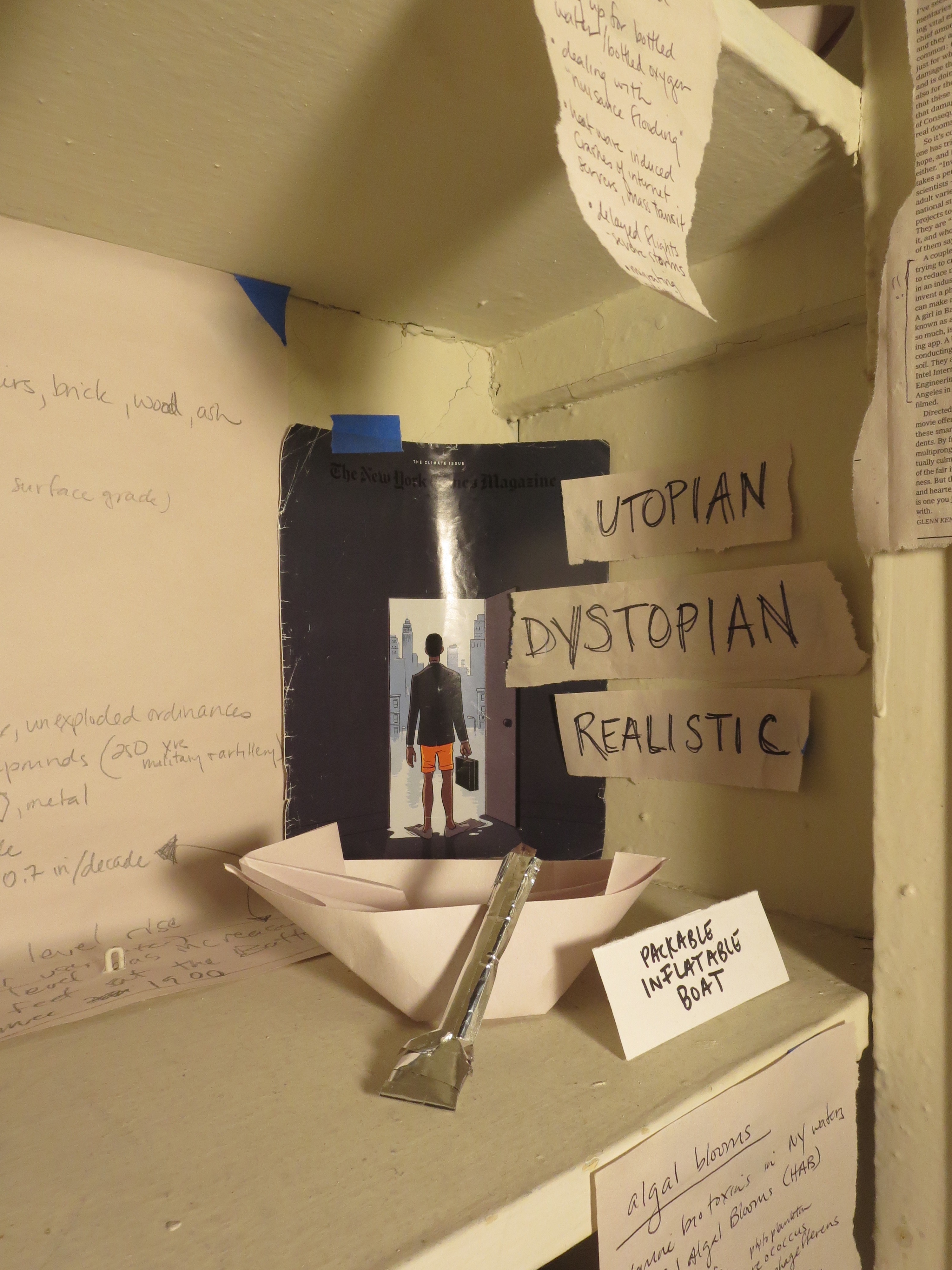
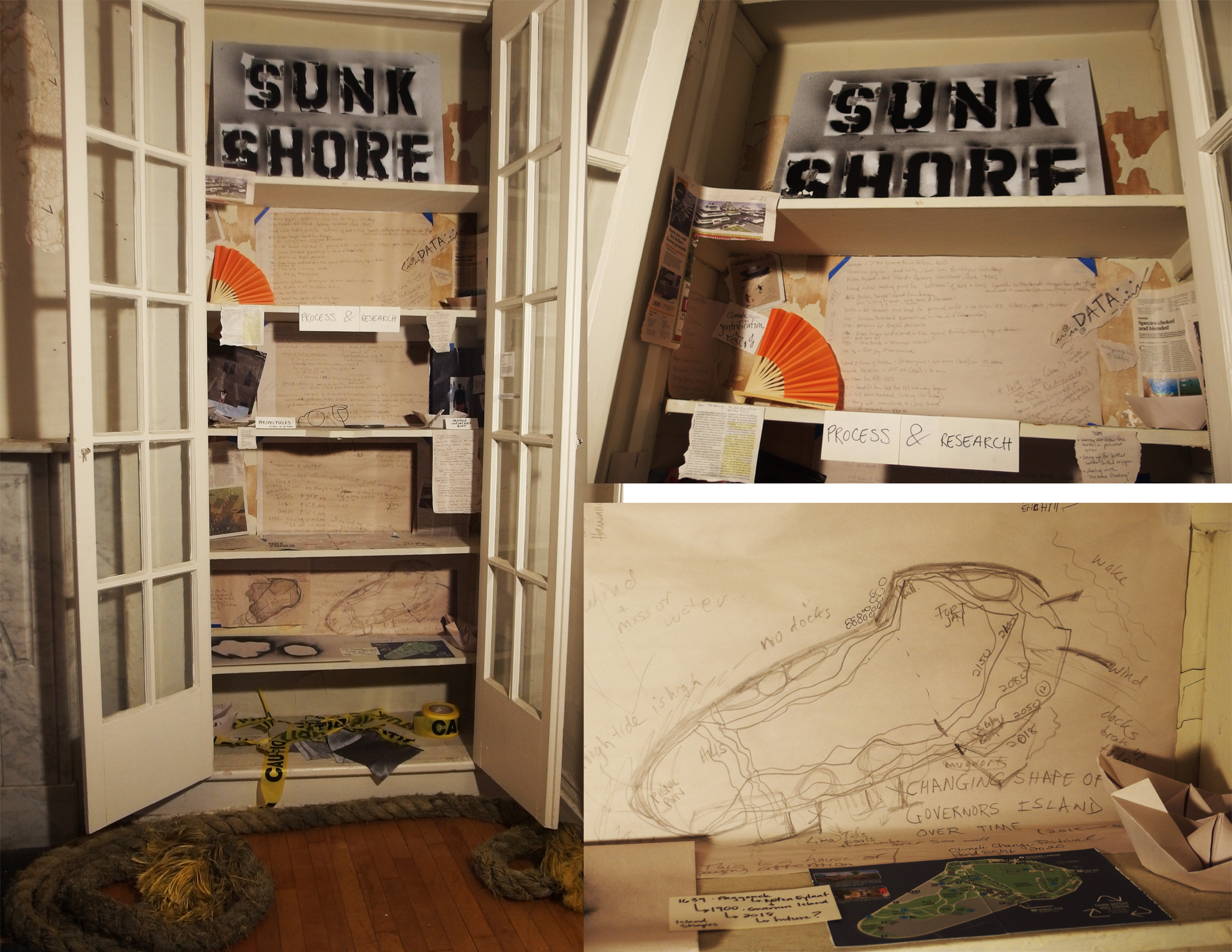


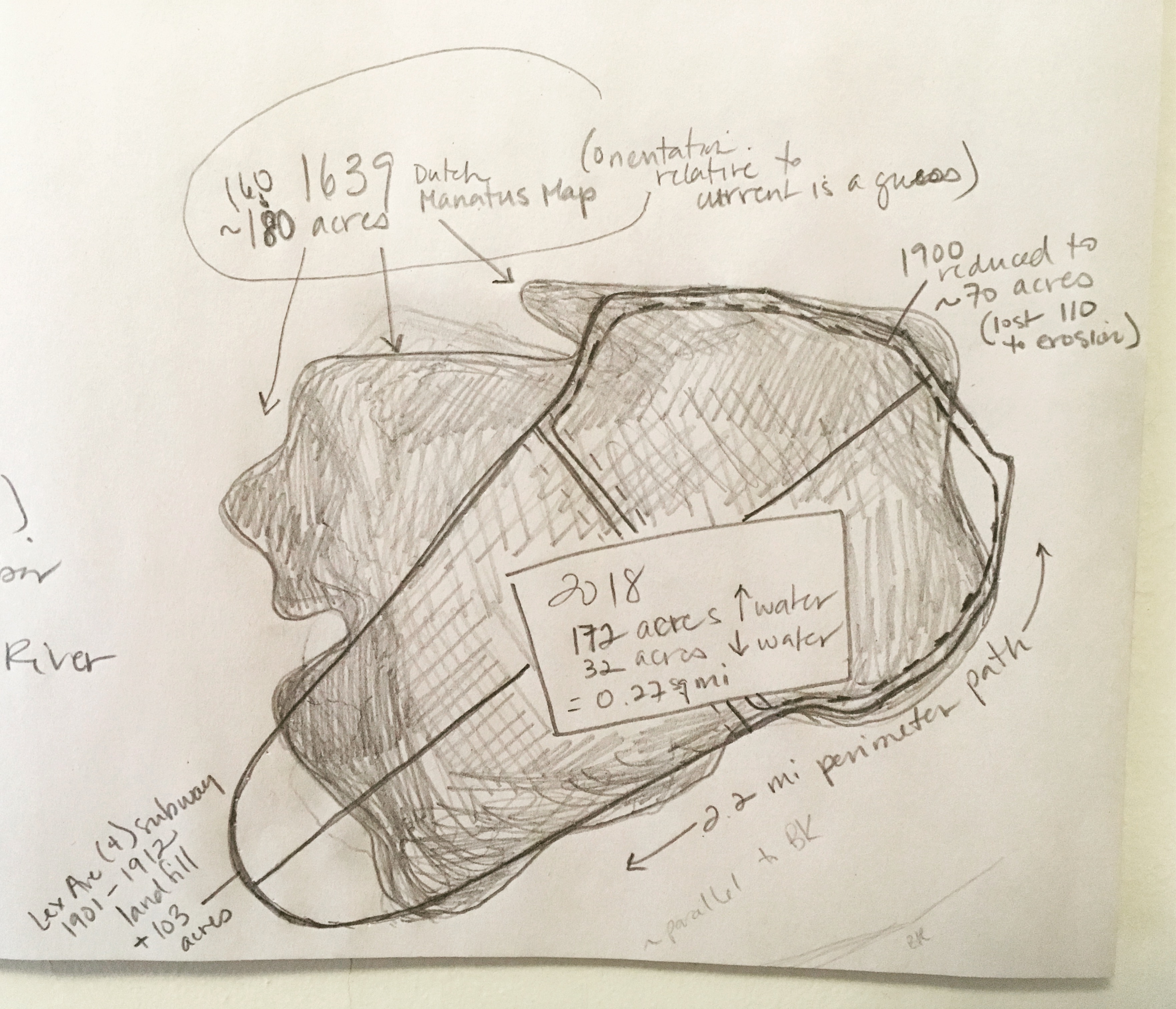
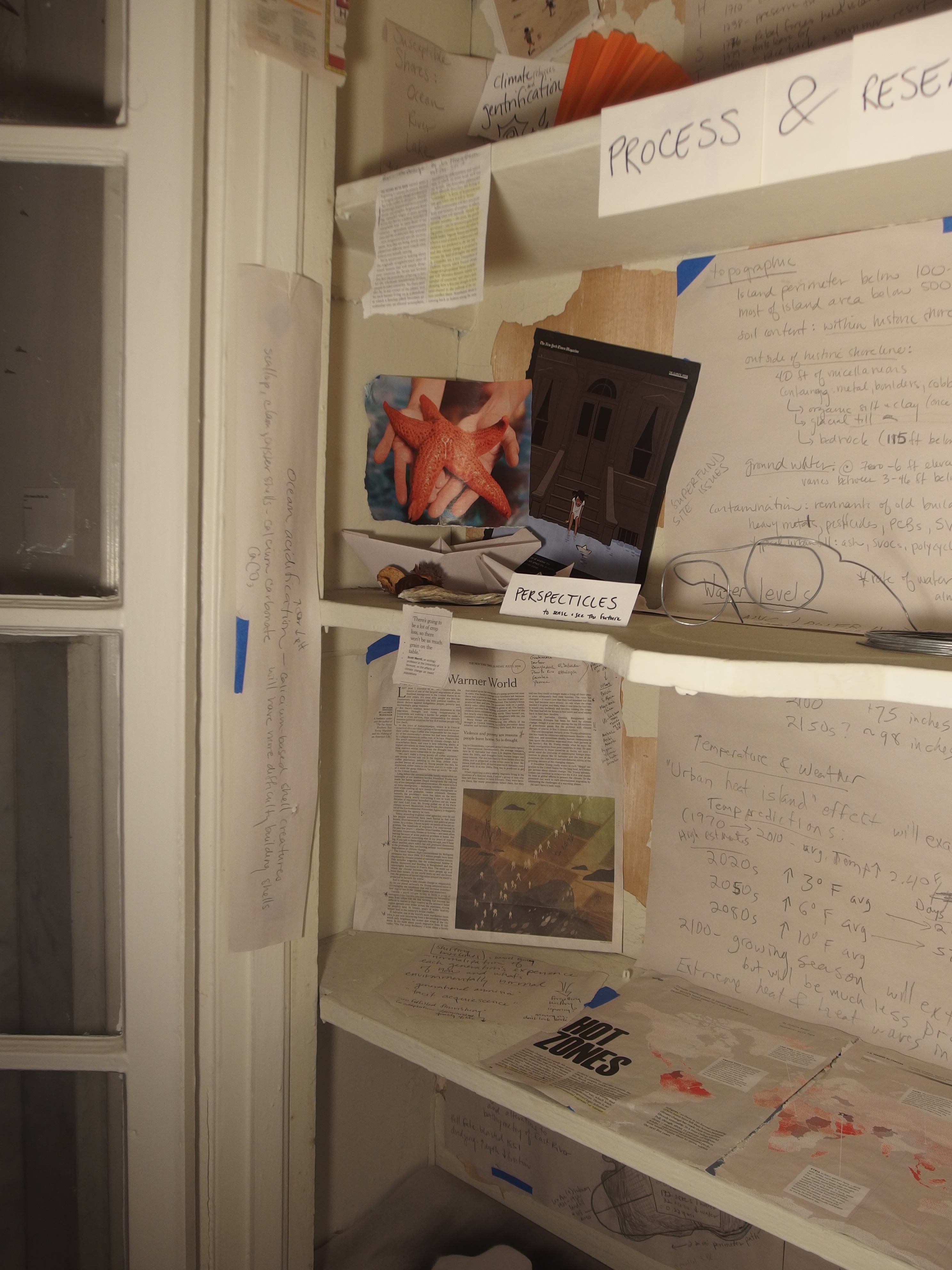
Sunk Shore 2017
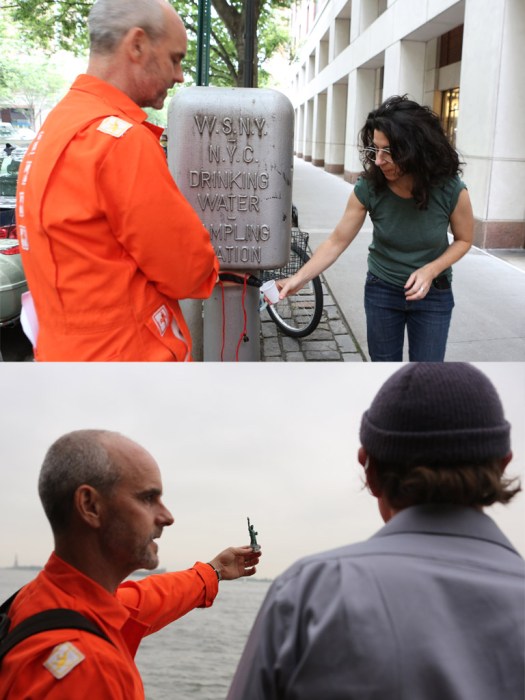
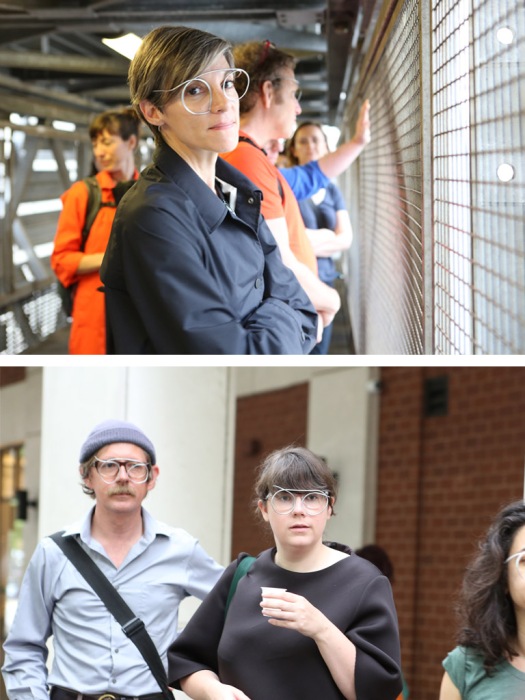
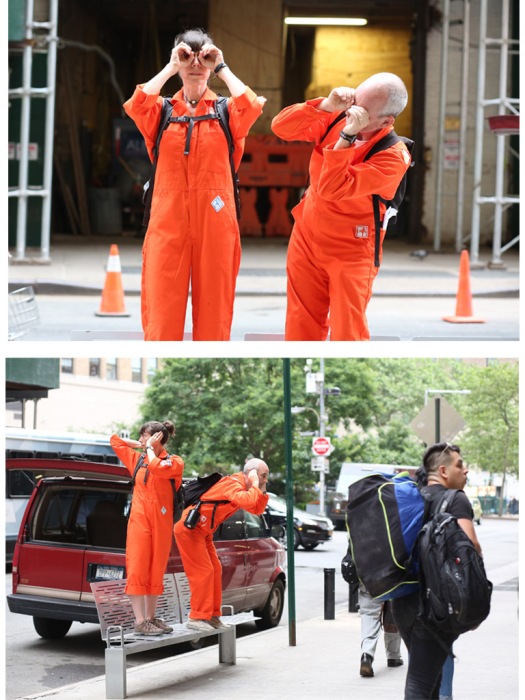
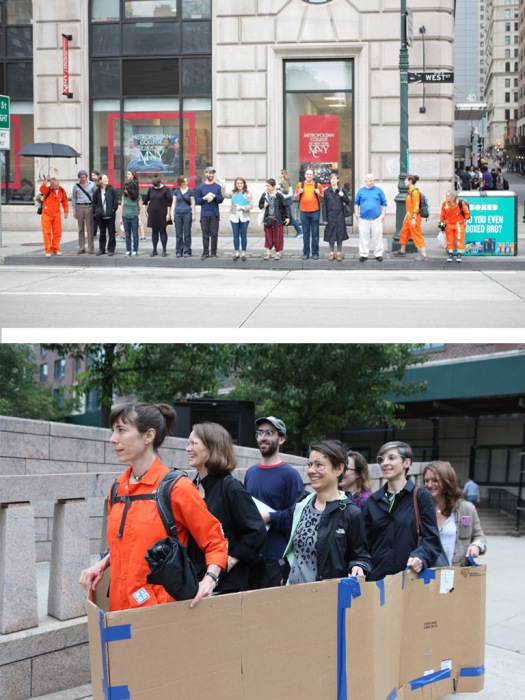
Devised by Paul Benney, Carolyn Hall, and Clarinda Mac Low as part of the Works on Water inaugural triennial of art that works in, with, or on the water, co-produced and presented by New Georges theater company and 3LD Art & Technology, and co-curated by 6 artist/curators, June 2017
Sunk Shore was a playful speculative tour of the future of lower Manhattan. TRYST led participants along a route close to and on the Hudson River, first into the past (to establish the terrain), then into an extrapolated future, using sensory exercises, the surrounding structures, and evocative props.
At the end of the tour, everybody was given a pamphlet that contained all the data used to create the tour.
